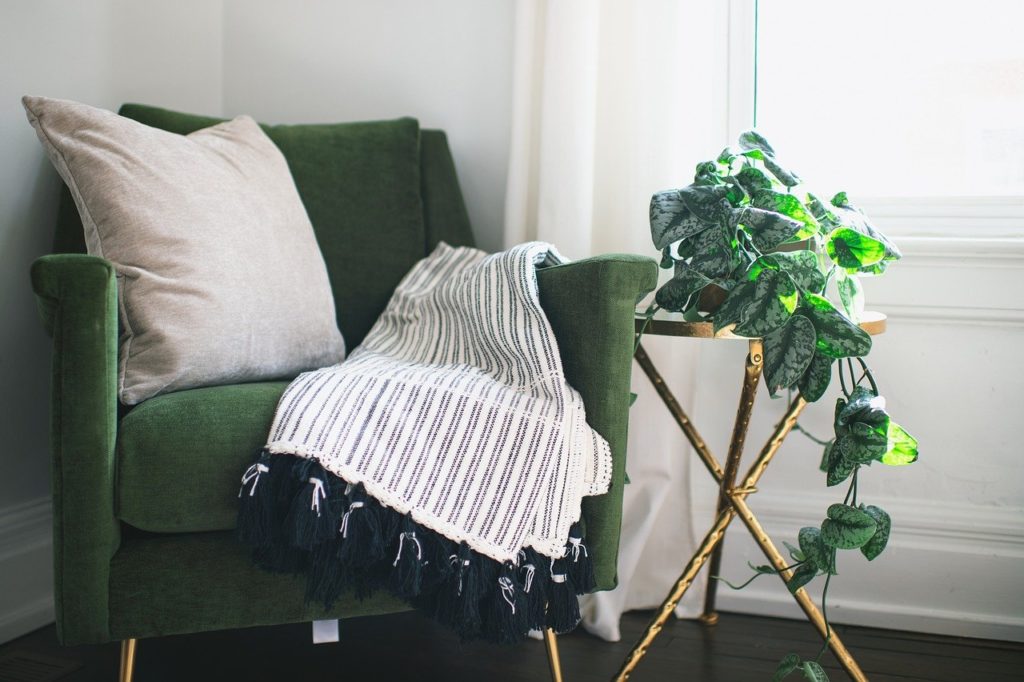An outdated baby crib that used to be sleep help can be converted into a striking pair of chairs that are both sturdy and practical.
Hard Labour Rating:
3/10 (although an extra pair of hands may be necessary)
Skills Level Rating: 6/10 (ability to use power tools)
Time Required: weekend project
Cost: ±100 (excluding paint)
Shopping List
- one 2400mm x 503mm x 20mm laminated pine shelf cut into: four 500mm x 500mm x 20mm (seats and shelves). The individual pieces will be rounded to form the curved shape of the cot/seat.
- one 1800mm x 220mm x 22mm pine plank (for rounded backrests)
- four 780mm x 44mm x 44mm (front legs)
- four 480mm x 44mm x 44mm (back legs)
- two 450mm x 22mm x 44mm (back support)
- forty-four 315mm x 10mm dowels sections (this is an average length and sections that are too long will be sanded flush with the belt/ orbital sander.
Other Items:
- twenty 8mm x 70mm chipboard screws (to fix the 44 x 44mm legs)
- wood glue
- medium grit sandpaper (120 grit)
- wood filler (to fill over countersunk screws)
- paintbrush and foam roller
- multisurface primer
- child-friendly (lead-free) water-based enamel/ acrylic PVA
- two latches (we used sash window latches)
Tools
- electric drill and 10mm drill bit
- cordless drill and 3mm combination countersink drill bit
- jigsaw
- belt sander or orbital sander
- combination square
- spatula
- tape measure
- sharp pencil
Sketch Before Get Started
1. Mark out a 180o curve on each of the 500mm x 500mm pine sections. Start the curve at 250mm along the edge and have the 90o point of the curve touch midway along the other edge. Now use a jigsaw to cut these half-round sections.
Mark out 44mm x 44mm sections in each of the remaining corners and cut these out too. Mark and cut out 44mm x 44mm cut outs approximately 400mm along the curved edge of the bottom sections. Then cut out a 44mm x 22mm section at the apex of the curve on the top (seat) sections. (See sketch for the positions of the cutouts.)
2. Use one of the curved sections to replicate the curve on the 220mm x 22mm pine plank. Cut along these lines using a jigsaw. This will form the outside curve of the rounded backrest. TIP: Offset the seat plank to fit the curve onto the 220mm-wide plank, and work at an angle to ensure you can cut four equal curves.
3. Use offcut pieces of wood to create a simple measuring device to recreate the same curve 50mm to the ‘inside’ of the curve cut in step 2.
4. Use the jigsaw to cut out the arm/backrest sections. TIP: Use a clamp to firmly hold the parts in place while you are cutting.
5. Now place the longer front legs alongside each other and mark lines (across all four) at the 310mm, 330mm, 480mm, and 500mm marks. Mark the shorter back legs only at the 310mm and 330mm marks.
6. Place the armrest sections over the top (seat) parts, as shown. Then mark a line in the centre of the armrest and then score points along this curve approximately 50mm apart. Use the electric drill and 10mm drill bit to drill holes at these points. TIP: Use a piece of electrical tape to mark a position 35mm along the drill to ensure that the shaft goes through the armrest but only midway into the seat section.
7. Fix the legs to the seat and lower platform, at the points marked out in step 5 using the 8mm x 70mm chipboard screws. Fit the 450mm x 44mm x 22mm back support section in place, as shown. REMEMBER to first apply wood glue before screwing these in place.
8. Now dab wood glue in the holes of the seat section and position each dowel. Apply wood filler to all joints and imperfections using the spatula. Once the filler is dry, use medium-grit sandpaper to finish all these areas. Then use a paintbrush to apply multi-surface primer. Once dry, use a paintbrush and foam roller to apply water-based enamel/acrylic PVA in the color of your choice. Finally, add the catches to the outside top of the front legs.
